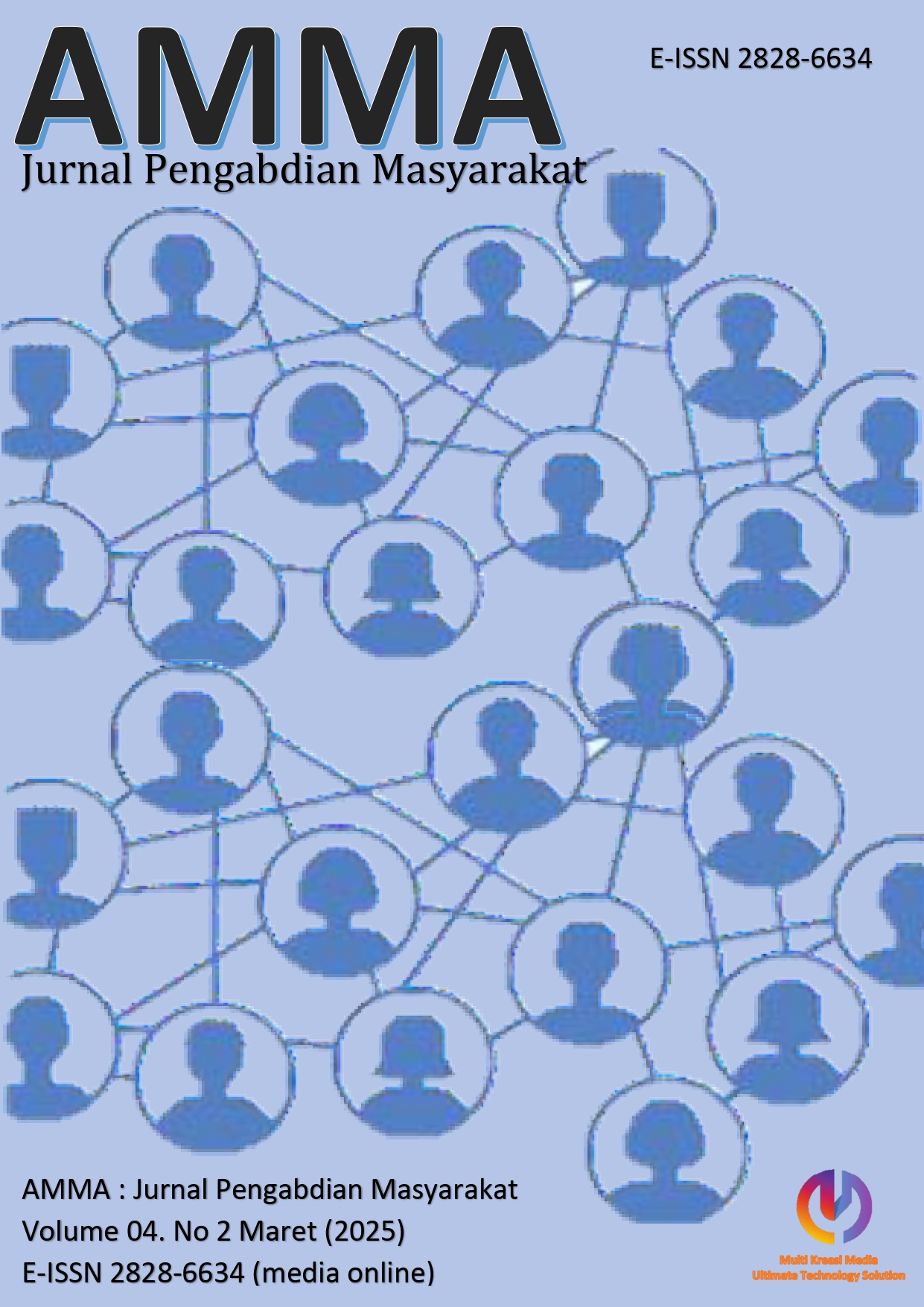Diversivikasi Pengolahan Buah Pisang Sebagai Sumber Mata Pencaharian Tambahan Di Desa Parparean 1 Kecamatan Porsea
Keywords:
Kuliah Pengabdian Pada Masyarakat, Pemberdayaan Masyarakat, Inovasi Produk Pisang, Ekonomi Lokal, Edukasi MasyarakatAbstract
Community Service Lecture (KPPM) is an academic program that aims to implement science and technology (IPTEKS) in helping communities overcome existing problems. This activity carries a multidisciplinary approach and begins with observation and mapping of the area to design appropriate solutions. One of the locations for the implementation of KPPM is Parparean I Village, Porsea District, Toba Regency, where the majority of the population works as rice farmers and has abundant banana farming. The main problem found in this village is the lack of community skills in processing bananas into high-value products. So far, bananas have only been consumed directly or processed in simple forms such as fried bananas and kolak. Therefore, KPPM activities are focused on education and training in processing bananas into various innovative products, such as chocolate banana chips, kul-kul ice, and banana curry. The main objective of this program is to improve community skills in diversifying banana-based products in order to open up business opportunities and improve their economic welfare. In addition, this program also provides benefits for students by allowing them to apply the knowledge they have learned in college and improve their problem-solving and collaboration skills with the community. The results of this activity show that the community begins to understand the importance of innovation in banana processing and gain new skills in banana-based food production. With ongoing assistance, it is hoped that the community can develop local products that are competitive in the market and create a better economic impact in the long term. KPPM not only provides benefits to the community but also to students and universities in carrying out the Tri Dharma of Higher Education, especially in the field of community service.
References
Dellia Mila Vernia, Widiyarto, S., Dwi Narsih, Mu’thia Mubashira, & Leni Tiwinyanti. (2020). Sosialisasi Dan Pembekalan Strategi Pemasaran Produk Olahan Pisang Pada Siswa Pondok. Jurnal Pengabdian UntukMu NegeRI, 4(1), 125–128. https://doi.org/10.37859/jpumri.v4i1.1919
Hartono, A., Bagas, P., & Janu, H. (2013). Pelatihan Pemanfaatan Limbah Kulit Pisang Sebagai Bahan Dasar Pembuatan Kerupuk. Jurnal Inovasi Dan Kewirausahaan, 2(3), 198–203.
Makarawung, V. . ., Pangemanan, P. A., & Pakasi, C. B. D. (2017). Analisis Nilai Tambah Buah Pisang Menjadi Keripik Pisang Pada Industri Rumah Tangga Di Desa Dimembe Kecamatan Dimembe. Agri-Sosioekonomi, 13(2A), 83. https://doi.org/10.35791/agrsosek.13.2a.2017.16608
Mempawah, K., & Barat, K. (2016). Penganekaragaman Produk Olahan Pisang Didesa Peniti Luar Kabupaten Mempawah Kalimantan Barat. TEKNOLOGI PANGAN: Media Informasi Dan Komunikasi Ilmiah Teknologi Pertanian, 7(2), 62–67. https://doi.org/10.35891/tp.v7i2.506
Sagajoka, E., Nona, R. V., Antonia, Y. N., & Gobhe, D. (2021). Peningkatan Ekonomi Masyarakat Desa Borani Melalui Inovasi Pengolahan Keripik Batang Pisang (BAPIS). Prima Abdika : Jurnal Pengabdian Masyarakat, 1(4), 136–143. https://doi.org/10.37478/abdika.v1i4.1257





















